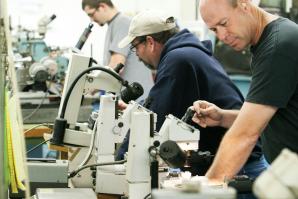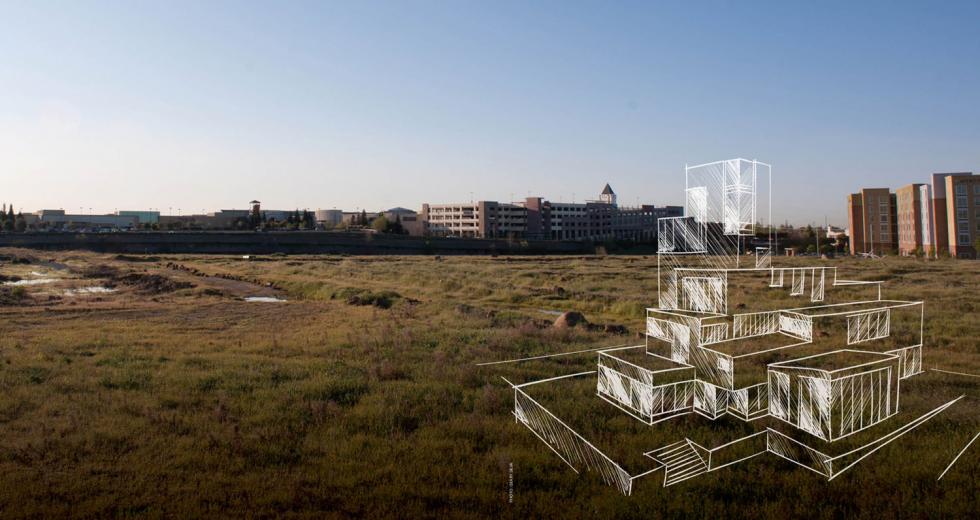Roseville may be contemplating — again — plans to build a long-coveted conference center. The city has for years touted the benefits of a civic center, but such projects are notorious for their inability to bring in hefty, consistent revenue, and plenty of people are wondering if the right time for such a gamble is now.
Veteran commercial real estate developer Mark Friedman, president of Fulcrum Property Corp., helped the city negotiate a new deal on land it had been eyeing since 2007. The land’s previous owner, Albolghassem “Abe” Alizadeh, planned to build an Embassy Suites hotel plus a conference center for the city in conjunction with Kobra Properties, but his company filed for bankruptcy in 2008.
Although the price for the land at 210 Conference Center Drive has plummeted from the $12 million Alizadeh paid in 2005 to just $1.9 million, it still wasn’t a sweet deal for the city according to current values, says John Shaffer, senior research analyst at Colliers International. The city paid $2.20 per square foot for the well-placed 20 acres, which was near market peak at the time the deal closed in January, he says.
As negotiator, Friedman bought the parcel of land through his company then transferred ownership to Roseville. As part of the agreement, Fulcrum Property has a five-year option to purchase 15 acres of the land for future hotel construction and would pay the city $50,000 annually for that opportunity. Freidman declined to comment for this story.
Megan MacPherson, Roseville’s communications manager, says plans for the land are too premature for City Manager Ray Kerridge to discuss.
The city is considering that land in addition to other sites for a possible conference center, she says, but nothing has been decided, and the matter has yet to be presented to City Council.
Typically, the argument for building conference or convention centers is that the whole community benefits from increased business at hotels, restaurants and entertainment venues in addition to the burgeoning transient occupancy taxes (TOT) the city collects, says Maurice Robinson, president of Maurice Robinson and Associates, a hotel and real estate development consulting firm based in Manhattan Beach. But most of these facilities don’t generate enough money to pay for themselves, he says.
Mike Testa, senior vice president of convention sales and business development for the Sacramento Convention & Visitors Bureau, says the capital city benefits from traffic generated by conventions and other events. Sacramento in 2011 collected $20 million in transient occupancy taxes from hotels, which went into the general fund to pay for police and fire departments and to improve parks, he says.
“Convention and conference centers are designed to bring visitors to stay in hotels, eat at restaurants and to spend money here,” Testa says. “Our delegates brought $132 million into this economy last year.”
About 30 percent of the Sacramento Convention Center’s business hails from conventions, says Judy Goldbar, the facility’s general manager. The remaining 70 percent comes from events, including concerts, the Sacramento Philharmonic Orchestra and Sacramento Ballet.
Its profitability “is in the eye of the beholder,” Goldbar says. “We are profitable for the general fund. We operate at a budget that is break-even at the very least, but we do operate with a profit every year.”
Robinson says the scenario with the Sacramento Convention Center is the norm; many small to medium-sized cities vie for large conferences but often fill the facility with local events instead. The problem is that community events such as concerts, plays, bridal fairs and gift shows draw local residents, not out-of-town visitors who bring new money into the economy, he says.
“So they often end up being a community hall, which is nice, but it doesn’t generate the dollars needed to pay the debt service on the facility,” Robinson says. “It doesn’t meet the criteria of success for which it was intended.”
Big cities with tourist appeal, such as San Francisco, Los Angeles, Anaheim and San Diego, are convention magnets because they offer visitors so much to do when conferences adjourn each day.
A conference center’s profitability “is in the eye of the beholder.”
Judy Goldbar, general manager, Sacramento Convention Center
Smaller, less tourist-driven cities, especially those like Roseville, with a population of fewer than 200,000, and Sacramento, with 466,000 residents, have a difficult time nabbing the big events, Robinson says.
On the contrary, David Attaway, CEO of Placer Valley Tourism, says South Placer County has enough attractions to draw visitors in greater numbers every year. He cites the Westfield Galleria and other specialty shopping, the variety of arts and entertainment venues and the 18 wineries that have sprouted up in recent years.
Still, Robinson points to the scenario of Escondido, a bedroom community 30-minutes outside San Diego with a population of about 143,000, as an example of the typical city-owned conference center.
In 1994, Escondido built The Center for the Arts, Escondido, a 1,500-seat conference center and museum. Since opening, the center has struggled, losing money in 14 of 16 years. In October 2011, in hopes of cutting costs, the city handed control of the center’s conference arm to a local developer building a Marriott hotel in the city’s downtown district, several miles away.
When smaller cities such as Escondido realize they can’t attract the big events and pay for the facility, Robinson says they seek counsel from marketers, who tell them it’s because they don’t have a big, full-service, high-end hotel connected to the center.
“The Center for the Arts was losing money big time, so they hired me to help them attract a developer to build a Marriott hotel attached to the conference center on city land,” Robinson says. “There was a TOT tax rebate involved and all sorts of municipal financial benefits given, including a $20 million city subsidy to the developer. By 2008, we couldn’t get it financed.”
Roseville previously planned to construct a 40,000-square-foot conference center that would seat 1,000 people, and during the past 17 years, at least three other developers have tried to work with the city to build a conference center and adjoining hotel.
Roseville has hired PKF Consulting USA, a national firm that specializes in the hospitality industry, to do a feasibility study for a conference center. Results have not been made public. Thomas Callahan, president of PKF in San Francisco, said he wasn’t comfortable talking about the study.
“Some feasibility studies are a little over-enthusiastic,” Robinson says. “The feasibility study for Roseville will probably say ‘You can only afford X amount of dollars or debt service based on tax revenues.’ I’m sure it will fall dramatically short of what it will actually take to build.”
Despite Roseville’s nearly 20-year failure to build a conference center, some city leaders continue to focus on the potential positive impact such a facility could have on the community and the local economy. A conference center would mean more business, says Wendy Gerig, CEO of the Roseville Chamber of Commerce.
“For years, due to the limitations we have with the size of things we can host here in Roseville, events have been pushed to other places,” Gerig says. “If we were able to build a conference center in the South Placer County region, we would be able to hold large events here.”
Right now, the largest facilities in Roseville are the Maidu Community Center, which can host up to 400 people, and the 300-seat Timber Creek Ballroom at Sun City. Hotels in the area — such as Fairfield Inn, Holiday Inn Express and Comfort Suites — are relatively small and offer limited, if any, meeting space.
Tourism in South Placer County increases annually, and as a result, the hotel room capacity has grown by about 45 percent, says David Attaway, CEO of Placer Valley Tourism, the travel authority for Roseville, Lincoln and Rocklin. Sporting events, including the West Zone Synchronized Swimming Championships held in March at Rusch Park in Citrus Heights, are what really draw people to the area, he says.
“Where are they having their events now? At various venues,” Attaway says. “The softball events are held at Maidu, and for larger events they go to Sacramento. From our vantage point, we would like them to stay here.”
Recommended For You

Kickstarter
Placer County hopes to win tourism dollars with new sports complexes
The rise of elite youth sports and the popularity of year-round athletics have created an emerging market for participant and spectator spending in south Placer County, which has positioned itself as a major sports destination. Now, two separate entities are looking to capitalize on the region’s sports market with large-scale venues that could turn a profit in as few as three years.

Right to Assembly
Growing manufacturing jobs in Placer County
If a local economy is thriving and healthy, it may have the manufacturing industry to thank. If things aren’t so good, it’s probably because manufacturing jobs are leaving.



